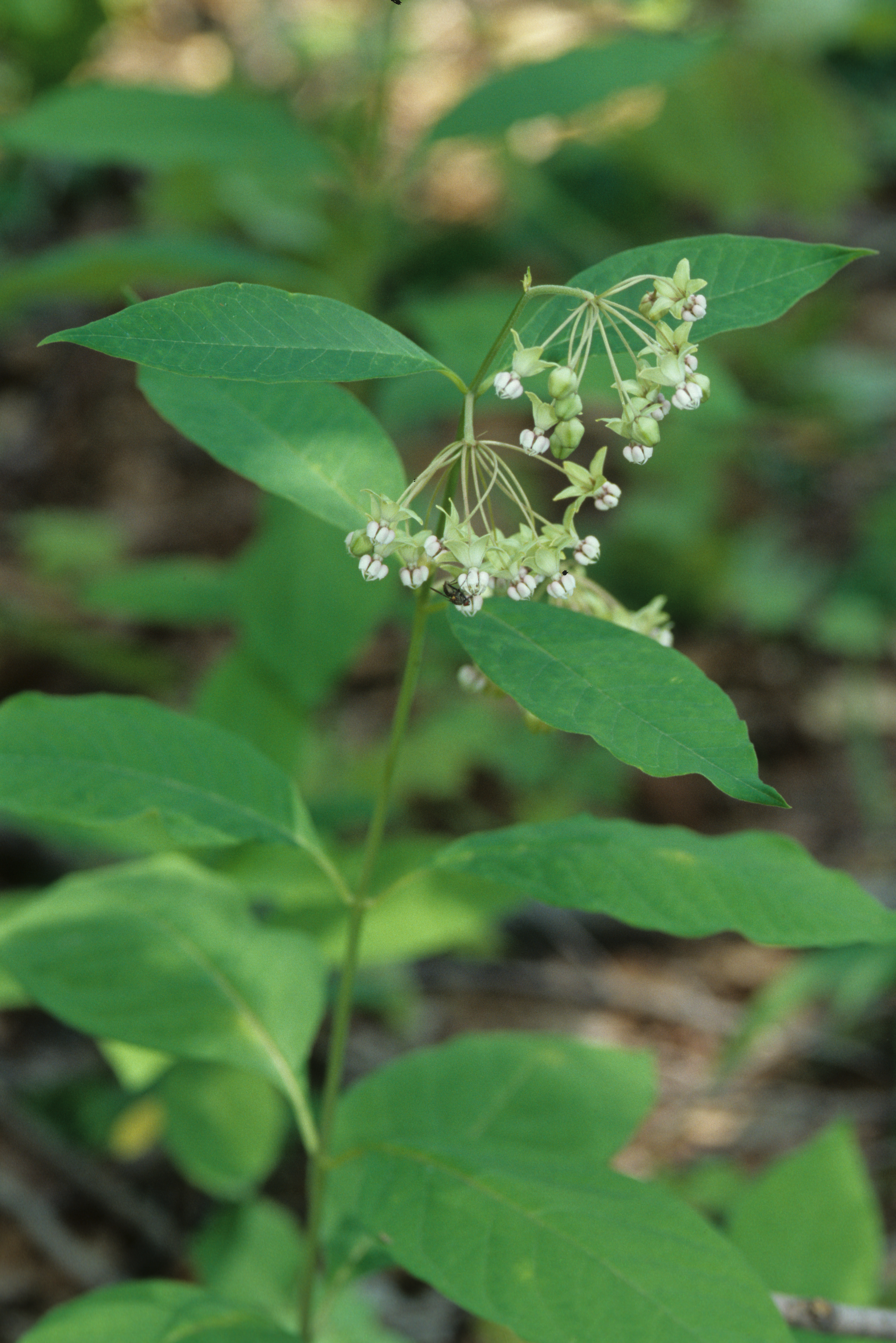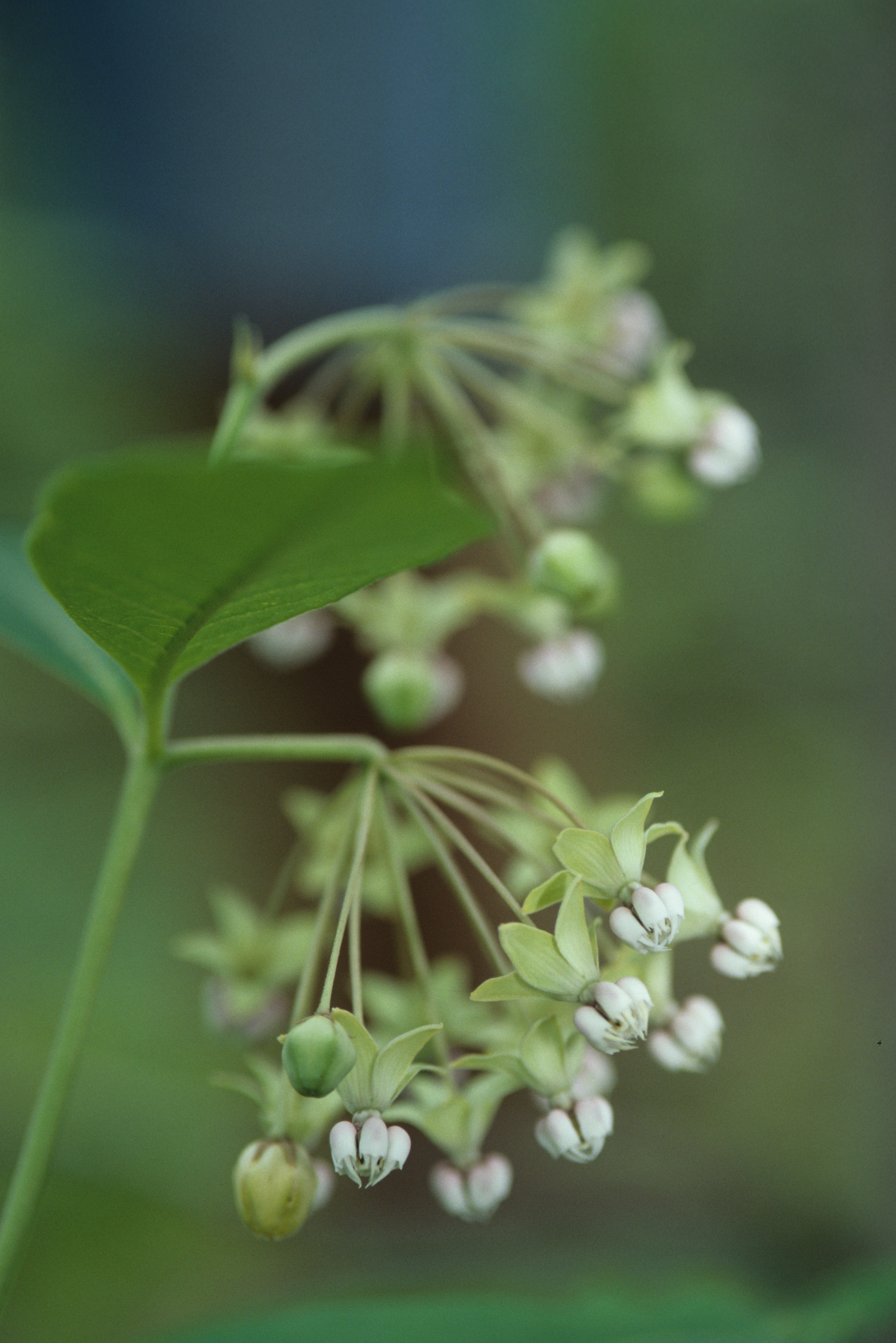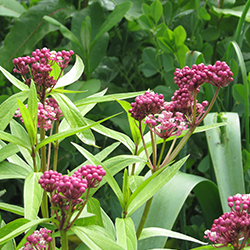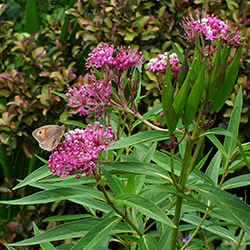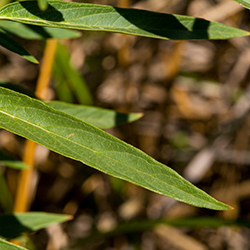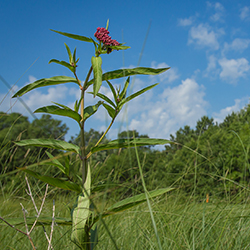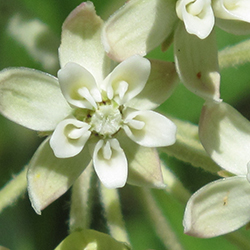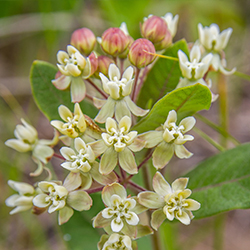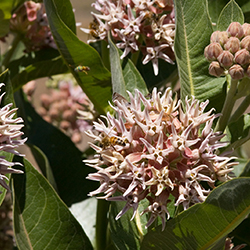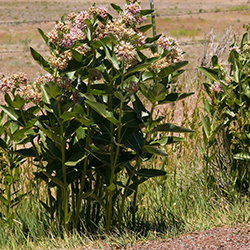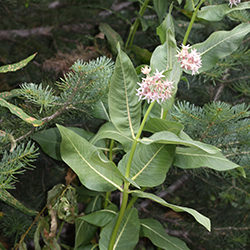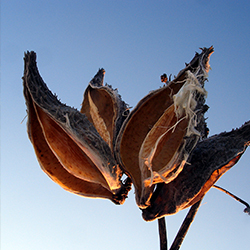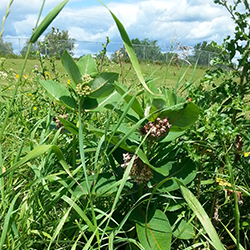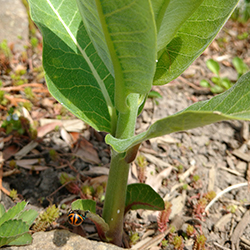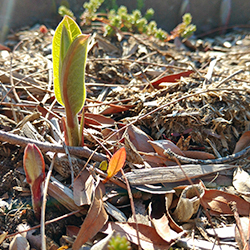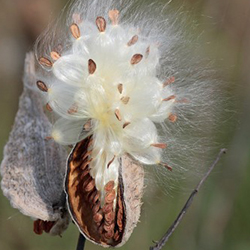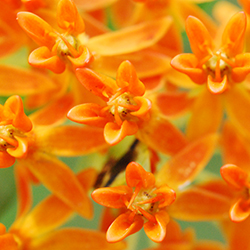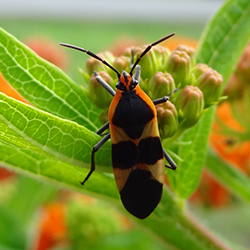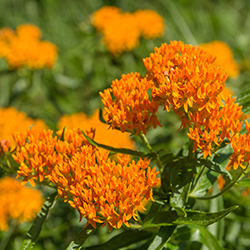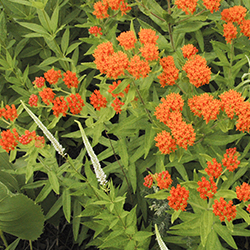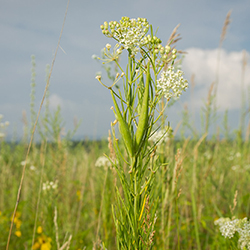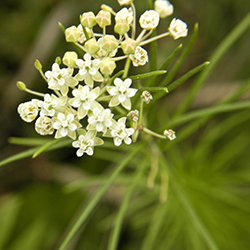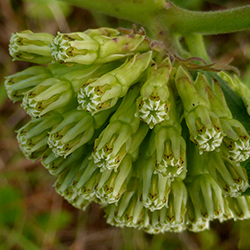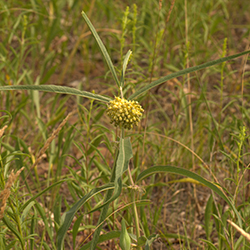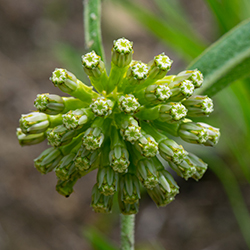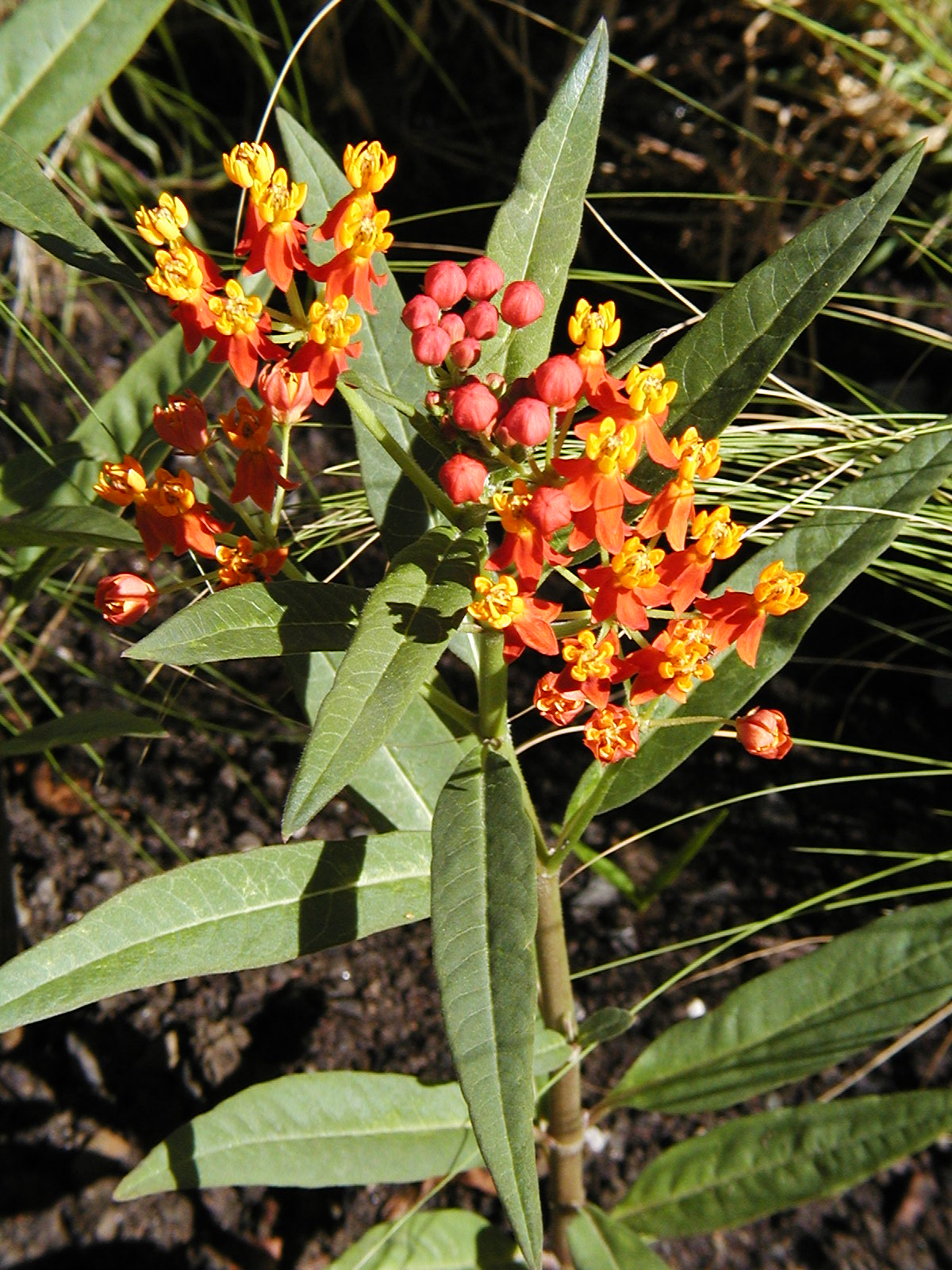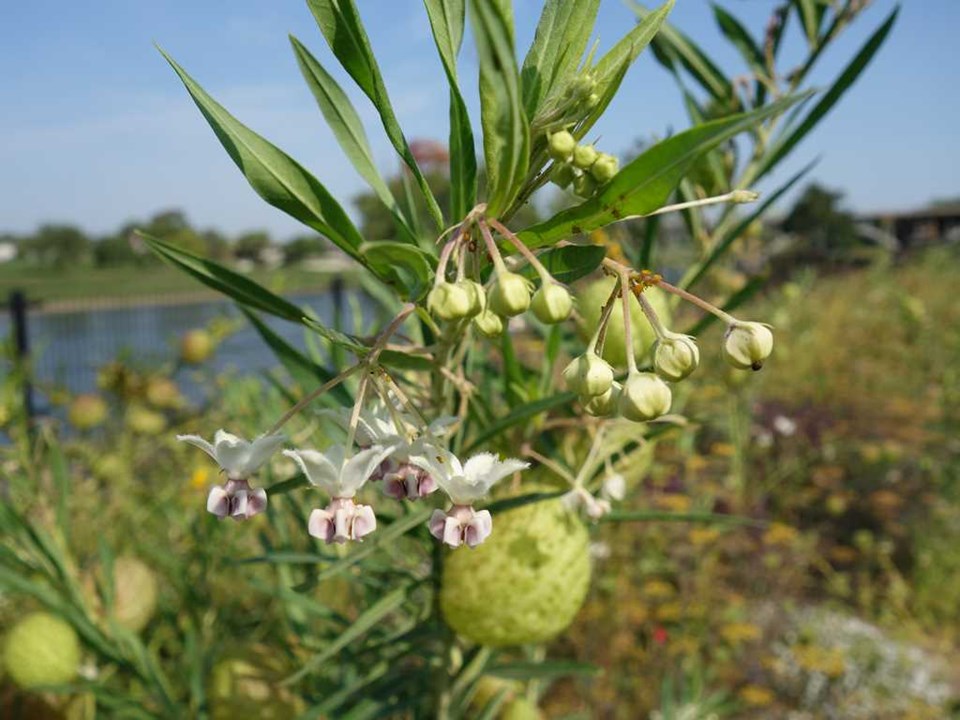Monarch means milkweed
Milkweed is a flowering plant essential to the life cycle of the monarch, as it is the sole source of food for the caterpillars. The survival of the butterfly depends on the accessibility of this host plant. An important part of Mission Monarch is to identify and map milkweed in Canada. There are about a dozen species of milkweed in Canada, in nine of the ten provinces.
Check out the identification sheets below to find and recognize milkweed species in your area.
SEARCH CRITERIA
SPECIFICATIONS
| Stem: | Glabrous, pale green to purplish green, from 60 to 150 cm tall. |
| Umbels: | Green-white to pink, drooping umbels with long pedicels. |
| Leaves: | Narrow, pointy tips, 5 to 25 cm long, arranged in opposite pairs. |
| Fruits: | Linear and lance-shaped follicles, pubescent, up to 15 cm long. |
| Habitat: | Moderately moist soil rich in organic matter, along forest edges and in clearings. Tolerates shade. |
| Distribution: | Ontario, Quebec |
SPECIFICATIONS
| Stem: | Downy (hairy), from 60 to 200 cm tall. |
| Umbels: | Red or purplish-pink. |
| Leaves: | Narrow, tapered, 4 to 17 cm long, arranged in opposite pairs. |
| Fruits: | Long, narrow and smooth follicles, changing colour from green to brownish. |
| Habitat: | Wetlands. Also found in swamps, ditches and near streams, rivers and lakes. |
| Population: | Often scattered – does not form dense colonies. |
| Distribution: | Manitoba, Ontario, Quebec, New Brunswick, Nova-Scotia, Prince Edward Island |
SPECIFICATIONS
| Stem: | simple (unbranched) and downy, 30 to 60 cm tall. |
| Flowers: | greenish white or pale violet corolla; orange or yellow corona. |
| Leaves: | opposite, oval, with pointy tips, 5 to 8 cm long. |
| Habitat: | likes sandy soil, roadsides and dry, sunny conditions. |
| Distribution: | British Colombia, Alberta, Saskatchewan, Manitoba, Ontario |
SPECIFICATIONS
| Stem: | 45 to 200 cm tall, velvety or pubescent (hairy). |
| Flowers: | pale pink, arranged in umbels. The corona hoods are long (9 to 13 mm) and lance-shaped, making the flowers look like stars. |
| Leaves: | opposite, 10 to 25 cm long, smooth or slightly downy. |
| Habitat: | well-drained soil, sunny sites, pastures, swamps, forest edges, untilled fields, roadsides, ditches. |
| Distribution: | British Colombia, Alberta, Saskatchewan, Manitoba |
SPECIFICATIONS
| Stem: | downy, usually single, 90 to 120 cm tall. Underground stems. |
| Leaves: | broad and thick, 10 to 20 cm long, arranged in opposite pairs on the stem and with pubescent undersides. |
| Flowers: | pale pink or violet, arranged in almost spherical umbels. |
| Fruits: | large spindle-shaped fruit, bumpy, rough and downy. |
| Habitat: | poor, dry soil, disturbed, sunny sites. |
| Distribution: | Saskatchewan, Manitoba, Ontario, Quebec, New Brunswick, Nova Scotia, Prince Edward Island |
SPECIFICATIONS
| Stem: | 20 to 60 cm tall. |
| Flowers: | bright orange-yellow, arranged in umbels. |
| Leaves: | alternate on the stem (not opposite each other), lance-shaped, 5 to 10 cm long, smooth on top and downy beneath. |
| Habitat: | limestone soils, open, rocky, dry sites. Does not tolerate shade. |
| Unique feature: | no milky sap. |
| Distribution: | Ontario, Quebec |
SPECIFICATIONS
| Stem: | angled, pubescent (hairy) or glabrous, 40 to 100 cm tall. |
| Flowers: | white corona and greenish corolla. |
| Leaves: | elongated and narrow, almost threadlike, 5 to 10 cm long. Arranged in groups of 2 to 4, opposite each other on the stem. |
| Fruits: | elongated and lance-shaped, 7 to 10 cm long, glabrous or pubescent (hairy). |
| Habitat: | dry, infertile soils. |
| Distribution: | Saskatchewan, Manitoba, Ontario |
SPECIFICATIONS
| Stem: | 30 to 90 cm tall, pubescent, green and sometimes purplish. |
| Flowers: | arranged in often downward-facing umbels, pale green sometimes tinged with violet. Unlike other milkweed species, the flowers of this species have no corona hoods. |
| Leaves: | arranged in opposite pairs on the stem. Vary in shape depending on the habitat where the plant is found. They may be long and narrow or broader and oval. The leaf edges may sometimes be wavy. |
| Habitat: | dry, sandy or rocky soils, but also in wetter sites like marshes. |
| Distribution: | British Colombia, Alberta, Saskatchewan, Manitoba, Ontario |
SPECIFICATIONS
| Stem: | Grey-green, glabrous (smooth) from 70 to 100 cm tall. |
| Umbels: | Eye-catching orange-red and yellow blooms that last into September. Under ideal conditions (tropics), it can bloom all year round. |
| Leaves: | Opposite and lance-shaped, smooth, sometimes with a white coloration along the central vein. They can measure up to 15 cm in length. |
| Fruits: | Long and narrow, 7 to 10 cm in length. |
| Habitat: | In gardens (ornamental plant in North America). Prefers a sunny environment. |
| Distribution: | The Caribbean, Central and South America, Mexico. Ornamental plant cultivated as an annual in Canada (cannot tolerate Canadian winters) or as an indoor plant. |
SPECIFICATIONS
| Stem: | Erect habit, up to 180 cm tall. |
| Umbels: | Umbels of pubescent (hairy) flowers white to pink-violet. They release a vanilla smell. |
| Leaves: | Opposite, long, narrow and lanced-shaped. Slightly pubescent, pale green in colour, and up to 10 cm long. |
| Fruits: | Light green, round, balloon-like fruit covered with soft bristles. Fruit is eye-catching and different from other milkweeds. |
| Habitat: | In gardens (ornamental plant in North America). Tolerates dry to moderately moist soil and likes full sun. |
| Distribution: | South Africa, Swaziland, and Mozambique. Ornamental plant cultivated as an annual in Canada (cannot tolerate Canadian winters). |


